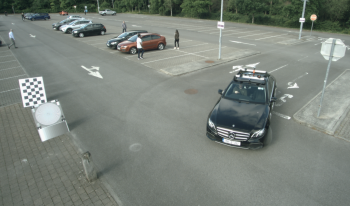
This paper investigates the relationship between image quality and computer vision performance. Two image quality metrics, as defined in the IEEE P2020 draft Standard for Image quality in automotive systems, are used to determine the impact of image quality on object detection. The IQ metrics used are (i) Modulation Transfer function (MTF), the most commonly utilized metric for measuring the sharpness of a camera; and (ii) Modulation and Contrast Transfer Accuracy (CTA), a newly defined, state-of-the-art metric for measuring image contrast. The results show that the MTF and CTA of an optical system are impacted by ISP tuning. Some correlation is shown to exist between MTF and object detection (OD) performance. A trend of improved AP5095 as MTF50 increases is observed in some models. Scenes with similar CTA scores can have widely varying object detection performance. For this reason, CTA is shown to be limited in its ability to predict object detection performance. Gaussian noise and edge enhancement produce similar CTA scores but different AP5095 scores. The results suggest MTF is a better predictor of ML performance than CTA.